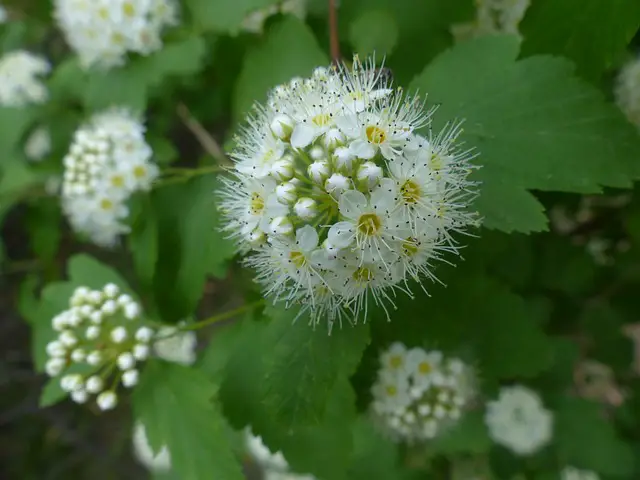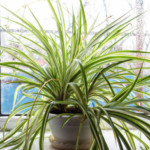Pruning Ninebark (Physocarpus spp.) is a crucial aspect of its care and maintenance, contributing to the overall health and aesthetic appeal of the plant. Knowing the best time to prune and adopting proper pruning techniques are essential for promoting robust growth and vibrant blooms. In this article, we will dive into the various aspects of pruning Ninebark, including the optimal timing, techniques, and considerations to ensure your plant thrives.
Understanding Ninebark:
Ninebark is a versatile deciduous shrub known for its attractive foliage, exfoliating bark, and clusters of small flowers. It belongs to the Rosaceae family and encompasses several species and cultivars, each with its unique characteristics. Common varieties include Physocarpus opulifolius, commonly known as Common Ninebark, and its cultivars such as ‘Diablo’ and ‘Center Glow.’
These shrubs are prized for their adaptability to a range of soil types and their ability to thrive in various environmental conditions. While Ninebark is relatively low-maintenance, pruning plays a crucial role in shaping the plant, removing dead or diseased wood, and stimulating new growth.
The Best Time to Prune Ninebark:
Timing is paramount when it comes to pruning Ninebark. The general recommendation is to prune during late winter or early spring, preferably before new growth begins. This timing aligns with the plant’s natural growth cycle, allowing it to allocate energy to developing new shoots and leaves during the upcoming growing season.
Pruning during late winter or early spring is particularly beneficial for Ninebark because it blooms on the previous year’s growth. By trimming at this time, you encourage the plant to channel its resources towards producing new flowering wood. However, it’s essential to be mindful of the specific climate in your region, as extreme cold temperatures or frost can potentially harm freshly pruned plants.
Pruning Techniques for Ninebark:
Proper pruning techniques are critical to the success of the process and the overall health of your Ninebark. Here are some key principles to keep in mind:
- Use Clean and Sharp Tools: Always use clean and sharp pruning tools to make precise cuts. Dull or dirty tools can cause unnecessary stress to the plant and increase the risk of diseases.
- Identify Dead or Diseased Wood: Start by identifying and removing any dead, damaged, or diseased wood. Make clean cuts just above a set of healthy buds or a lateral branch to encourage proper regrowth.
- Shape and Thin Appropriately: Ninebark responds well to shaping and thinning. Prune to achieve the desired shape, removing overcrowded or crossing branches. This helps improve air circulation within the plant, reducing the risk of diseases.
- Avoid Drastic Pruning: While Ninebark is generally forgiving, avoid drastic pruning, especially if the plant is mature. Gradual, light pruning is preferable to maintain the plant’s natural form and prevent shock.
- Consider the Specific Variety: Different varieties of Ninebark may have slightly different growth habits and flowering times. Familiarize yourself with the specific characteristics of your cultivar to tailor your pruning approach accordingly.
Considerations for Specific Situations:
While late winter or early spring is the ideal time for routine pruning, certain situations may warrant additional or off-season pruning:
- Renewal Pruning: If your Ninebark is becoming leggy or overgrown, consider renewal pruning. This involves cutting back the entire plant to a few inches above the ground. This drastic measure rejuvenates the shrub, stimulating vigorous new growth.
- Removing Suckers: Ninebarks can produce suckers, which are shoots that emerge from the base of the plant. Regularly remove these suckers to maintain a tidy appearance and prevent the shrub from spreading too aggressively.
- Dealing with Winter Damage: In regions where winter damage is a concern, inspect your Ninebark in early spring for any cold-induced damage. Prune away affected areas to promote healthy regrowth.
Common Pruning Mistakes to Avoid:
- Pruning at the Wrong Time: Pruning Ninebark too late in the season may remove potential flower buds for the upcoming year. It’s essential to adhere to the recommended late winter or early spring timeframe.
- Using Improper Tools: Using dull or unsanitary pruning tools can harm the plant and introduce diseases. Regularly clean and sharpen your tools to ensure clean cuts.
- Overlooking Diseased Wood: Failure to identify and remove diseased wood during pruning can lead to the spread of infections. Take the time to inspect the plant thoroughly and address any issues promptly.
- Neglecting Thinning: Overcrowded branches can impede air circulation, creating an environment conducive to diseases. Thinning the plant by selectively removing branches helps maintain a healthy and vigorous Ninebark.
- Pruning Too Aggressively: While Ninebark is resilient, overly aggressive pruning can stress the plant and compromise its health. Gradual, thoughtful pruning is preferable, especially for mature specimens.
Conclusion:
Pruning Ninebark is a fundamental aspect of its care, contributing to its overall health, shape, and blooming potential. By understanding the best time to prune, adopting proper techniques, and considering specific varieties and situations, you can ensure that your Ninebark thrives and graces your garden with its beauty year after year. Whether you’re performing routine maintenance or addressing specific issues, a well-executed pruning regimen will contribute to the longevity and vitality of your Ninebark shrub.
Frequently Asked Questions (FAQ)
Q1: When is the best time to prune Ninebark?
A1: The optimal time to prune Ninebark is late winter or early spring, before new growth begins. This timing allows the plant to allocate energy to developing new shoots and leaves during the upcoming growing season.
Q2: Can I prune Ninebark in the fall?
A2: While it’s generally advisable to prune Ninebark in late winter or early spring, you can perform light pruning in the fall if necessary. Avoid heavy pruning during this time, as it may remove potential flower buds for the following year.
Q3: How do I identify dead or diseased wood on my Ninebark?
A3: Dead or diseased wood may appear discolored, brittle, or lack signs of new growth. Inspect your Ninebark regularly and prune away any sections that exhibit these characteristics. Make clean cuts just above a set of healthy buds or a lateral branch.
Q4: Can I shape my Ninebark to a specific form through pruning?
A4: Yes, Ninebark responds well to shaping and can be pruned to achieve a specific form. Remove overcrowded or crossing branches and prune to the desired shape. However, avoid drastic pruning, especially for mature plants.
Q5: How often should I prune my Ninebark?
A5: Routine pruning is typically done annually during late winter or early spring. However, specific situations, such as dealing with winter damage or overgrown shrubs, may necessitate additional or off-season pruning.
Q6: What tools should I use for pruning Ninebark?
A6: Use clean and sharp pruning tools, such as hand pruners or loppers, to make precise cuts. Dull or dirty tools can harm the plant and increase the risk of diseases. Regularly clean and sharpen your pruning tools for optimal performance.
Q7: Can I perform renewal pruning on my mature Ninebark?
A7: Yes, renewal pruning is a technique that involves cutting back the entire plant to a few inches above the ground. This drastic measure can rejuvenate an overgrown or leggy Ninebark, stimulating vigorous new growth. However, exercise caution and only use this technique when necessary.
Q8: How do I deal with Ninebark suckers?
A8: Ninebarks may produce suckers, which are shoots that emerge from the base of the plant. Regularly remove these suckers to maintain a tidy appearance and prevent the shrub from spreading too aggressively.
Q9: Can I prune Ninebark during extreme cold temperatures?
A9: It’s advisable to avoid pruning during extreme cold temperatures or frost, as this can potentially harm freshly pruned plants. Late winter or early spring, when the plant is still dormant, is the ideal time for pruning.
Q10: What should I do if I notice winter damage on my Ninebark?
A10: If you observe winter damage on your Ninebark in early spring, carefully prune away the affected areas. This will promote healthy regrowth and help the plant recover from any cold-induced damage.






